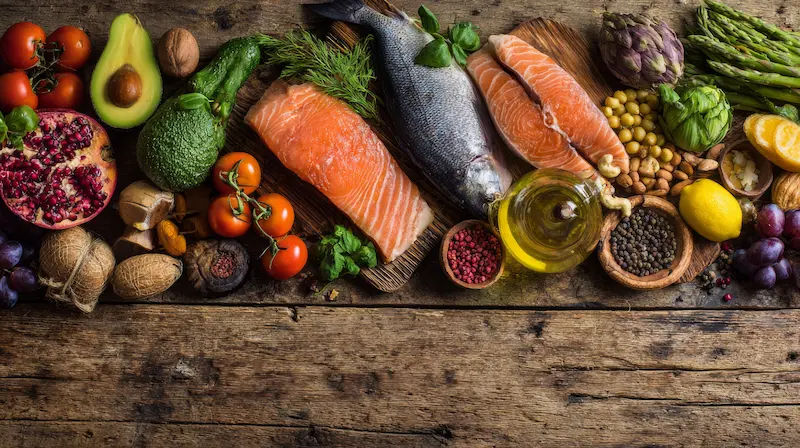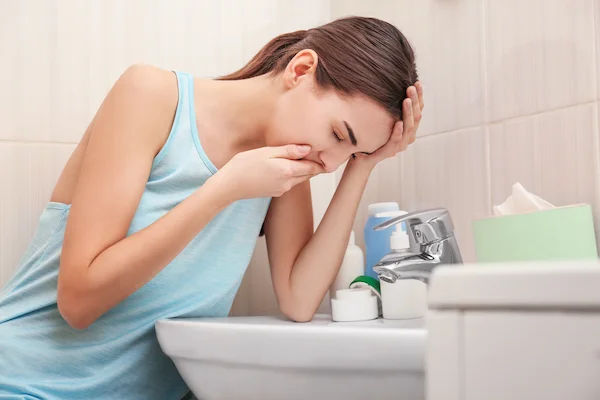Patharchatta Plant: Ayurvedic Uses, Benefits, and Side Effects
Patharchatta: Ayurvedic uses, patharchatta benefits, kidney stone remedy evidence, side effects, and safe-use tips from trusted medical sources.

Written by Dr. Md Yusuf Shareef
Reviewed by Dr. Dhankecha Mayank Dineshbhai MBBS
Last updated on 11th Nov, 2025

Introduction
If you or a loved one has dealt with kidney stones, you’ve probably searched for a natural kidney stone remedy. One traditional option you may come across is the Patharchatta plant (Kalanchoe pinnata), a medicinal plant used in Ayurveda and folk medicine across India and other parts of the world. Many people search for patharchatta benefits for urinary health, inflammation, and general wellness—but what does the evidence really say, and how can you use it safely?
This guide explains what Patharchatta is, how it’s traditionally used, what the science currently supports, potential side effects and risks, and safer, evidence-based steps you can take to prevent kidney stones. You’ll also find FAQs and trustworthy resources from leading health organisations.Consult a Top Ayurveda Doctor for Personalised Advice
What Is the Patharchatta Plant?
• Botanical name: Kalanchoe pinnata (also known as Bryophyllum pinnatum)
• Common names: Patharchatta, life plant, miracle leaf, air plant, cathedral bells
• Family: Crassulaceae (succulent family)
• Origin and distribution: Native to Madagascar; now grows widely in tropical and subtropical regions
• Distinctive feature: The plant is famous for producing small plantlets along the edges of its leaves, which can easily root and grow.
In traditional systems like Ayurveda and folk medicine, Patharchatta leaves have been used for a variety of purposes, especially for urinary complaints. However, traditional use is not the same as proven medical benefit. The quality and quantity of human studies remain limited, so it’s important to approach claims with caution and consult a healthcare professional before use.
Patharchatta Benefits: What This Medicinal Plant May Offer
People commonly ask whether Patharchatta has scientifically backed benefits. Here’s what is known so far:
• Traditional uses:
o Urinary issues, including kidney stones (as a “stone-breaking” or diuretic remedy)
o Skin support (as a leaf poultice)
o Minor inflammation or pain relief
o Coughs and colds in some folk traditions
• Research status:
o Laboratory and animal studies suggest that Kalanchoe species can have properties such as anti-inflammatory, antioxidant, antibacterial, and diuretic effects.
o Evidence in humans is limited. There are no large, high-quality clinical trials that prove Patharchatta prevents or treats kidney stones or other conditions.
o Safety data in pregnant or breastfeeding individuals and people with chronic health conditions are inadequate.
Bottom line: While Patharchatta is a well-known medicinal plant in Ayurveda, current scientific evidence for specific health benefits in humans is limited. Use caution and consult a clinician, especially if you have a medical condition, take medications, are pregnant, or are considering it as a kidney stone remedy.
Can Patharchatta Help as a Kidney Stone Remedy?
Why kidney stones happen
Kidney stones form when minerals and salts crystallise in urine. The most common types are calcium oxalate and calcium phosphate stones; others include uric acid and struvite stones. Risk factors include low fluid intake, high sodium diets, certain medical conditions, and family history.
What the science says about Patharchatta for stones
• Traditional claim: Patharchatta leaf preparations are used in some communities to support urine flow and as a folk kidney stone remedy.
• Current evidence: Modern evidence is limited and mostly from lab and animal studies. These suggest potential diuretic or anti-crystallisation effects, but we don’t have strong human trials proving that Patharchatta can reliably dissolve or prevent stones.
• Clinical guidance: Leading medical groups emphasise proven strategies—adequate hydration, diet changes, and specific medications when needed—over unproven herbal remedies.
Practical takeaways
• Do not rely on Patharchatta alone for kidney stones, especially if you have pain, fever, vomiting, blood in urine, or symptoms of infection. Seek urgent medical care for severe symptoms.
• If you wish to use Patharchatta as a complementary approach, talk with your doctor or a qualified Ayurvedic practitioner. Make sure it won’t conflict with your diagnosis or medications and that you continue evidence-based care.
How Is Patharchatta Used in Ayurveda and Folk Practice?
Note: The following reflects common traditional practices, not medical advice. There is no standardised dosing for Patharchatta, and quality varies.
• Parts used: Typically the leaves; occasionally the root in some traditions.
• Common traditional forms:
o Fresh leaf juice (svarasa)
o Decoction (boiled preparation)
o Paste or poultice applied to intact skin
o Tea or dried powder in certain preparations
• Modern commercial forms:
o Capsules, tablets, powders, tinctures, or teas sold as herbal supplements
Important safety notes
• Standardisation: Herbal supplements are not regulated the same way as prescription drugs in many countries. Potency and purity can vary widely.
• Dosing: Because there’s no widely accepted standardised dosage backed by robust clinical trials, dosing guidance should come from a qualified practitioner who knows your health history.
Potential Patharchatta Side Effects and Risks
Because human research is limited, the full safety profile is not well defined. Potential concerns, based on plant chemistry, animal data, and general herbal safety principles, include:
• Gastrointestinal upset: Nausea, stomach discomfort, or diarrhoea can occur with many herbal preparations.
• Allergic reactions: Rash, itching, or swelling—stop use and seek care if you notice symptoms of allergy.
• Heart-related concerns: Some Kalanchoe species contain compounds that can affect the heart in animals. While human data are limited, people with heart disease or those on heart medications should be cautious and consult a clinician before use.
• Blood pressure and diuretic effects: If Patharchatta has diuretic-like effects, it may interact with diuretic medications or affect hydration and electrolytes.
• Pregnancy and breastfeeding: Safety is not established. Avoid use unless supervised by a clinician who knows your full medical situation.
• Surgery: Many supplements can affect bleeding, blood pressure, or sedation. Stop herbal supplements at least 1–2 weeks before planned surgery, unless your surgeon advises otherwise.
Possible Interactions with Medications
Talk with a physician or pharmacist before using Patharchatta if you take:
• Diuretics or blood pressure medicines
• Heart medications (including antiarrhythmics, digoxin, or others)
• Medications that affect electrolytes
• Anticoagulants or antiplatelets
• Sedatives or CNS-active drugs
• Any medication with a narrow therapeutic range
Who Should Avoid Patharchatta?
• Pregnant or breastfeeding individuals (safety not established)
• Children (lack of safety data)
• People with heart rhythm problems or significant heart disease
• Those with chronic kidney disease, unless directed by a specialist
• Anyone with a history of severe allergies to plants in the Crassulaceae family
• People scheduled for surgery (unless cleared by the surgical team)
Evidence-Based Steps to Prevent Kidney Stones
If kidney stones are your main concern, these proven strategies from major medical centres can help reduce risk:
Hydration
• Aim to produce at least 2 to 2.5 litres of urine daily. This typically requires drinking about 2.5 to 3 litres of fluid per day, more if you live in a hot climate or exercise heavily.
• Water is best. Citrus beverages (like lemon or lime water) provide citrate, which can help prevent certain stones.
Sodium and protein
• Limit sodium to help reduce urinary calcium. Many guidelines suggest staying under 2,300 mg sodium per day; your doctor may advise lower limits if you form stones.
• Moderate animal protein (meat, poultry, fish), which can increase stone risk in some people. Do not eliminate protein; choose balanced portions and consider plant proteins as appropriate.
Calcium and oxalate
• Do not cut out dietary calcium. Instead, get adequate calcium from foods and pair calcium with meals to help bind oxalate in the gut (your clinician can specify your target).
• If you form calcium oxalate stones, your doctor may recommend reducing high-oxalate foods (e.g., spinach, beets, nuts) while maintaining adequate calcium intake.
Weight and conditions
• Manage weight, blood pressure, and conditions like gout or diabetes with the help of your healthcare team.
Medications when needed
• Depending on your stone type and urine chemistry, your clinician may prescribe:
o Thiazide diuretics
o Potassium citrate or other citrate preparations
o Allopurinol for certain uric acid–related cases
• Follow-up with 24-hour urine testing can fine-tune your plan.
When to Seek Medical Care for Possible Stones
• Severe flank or abdominal pain, nausea/vomiting, blood in urine, fever, chills, or difficulty urinating are red flags.
• If you have a single kidney, are pregnant, or have a known kidney condition, contact a clinician promptly for any symptoms.
How to Choose and Use Herbal Supplements Safely
If you and your clinician decide to try Patharchatta as a complementary option:
• Speak to your doctor or pharmacist first:
Share all medications and supplements you take.
• Choose quality products:
o Look for third-party testing seals (e.g., USP, NSF, ConsumerLab) when available.
o Avoid products making cure-all claims or lacking clear ingredient lists.
• Start low, monitor closely:
o Stop if you experience side effects.
o Keep a log of any symptoms and changes.
• Avoid in pregnancy/breastfeeding and in children unless specifically advised by a qualified clinician.
• Do not use Patharchatta as a replacement for prescribed kidney stone treatments or emergency care.
Balanced Perspective on Patharchatta Benefits
• It’s reasonable to explore traditional herbs like Patharchatta as part of a holistic approach, but the best outcomes come from combining safe lifestyle strategies with medical guidance.
• At this time, Patharchatta cannot be considered a proven kidney stone remedy in humans. If you choose to use it, treat it as complementary—not primary—care, and prioritise evidence-based prevention.
Consult a Top Ayurveda Doctor for Personalised Advice
Disclaimer
This article is for educational purposes only and is not a substitute for professional medical advice, diagnosis, or treatment. Always seek the guidance of your physician or other qualified health provider with any questions you may have regarding a medical condition or before starting any new health regimen or supplement.
Consult a Top Ayurveda Doctor for Personalised Advice

Dr. Shiv Prakash Singh
Ayurveda Practitioner
19 Years • BAMS
Kolkata
Vedhive Ayurveda College Street, Kolkata

Dr. Rik Sadhukhan
Ayurveda Practitioner
8 Years • BAMS
Kolkata
Vedhive Ayurveda, Ballygunge, Kolkata

Dr. Pepsy Jose
Panchakarma Practitioner
14 Years • BAMS, MD Ayurveda (Panchakarma)
Bengaluru
AYURRHYTHM HOLISTIC CLINIC AND PANCHAKARMA THERAPY, Bengaluru

Dr. Anjan Das
Ayurveda Practitioner
8 Years • Ayurvedacharya ( B.A.M.S )
Dumdum
Vedhive Ayurveda Clinic, Dumdum
Consult a Top Ayurveda Doctor for Personalised Advice

Dr. Shiv Prakash Singh
Ayurveda Practitioner
19 Years • BAMS
Kolkata
Vedhive Ayurveda College Street, Kolkata

Dr. Rik Sadhukhan
Ayurveda Practitioner
8 Years • BAMS
Kolkata
Vedhive Ayurveda, Ballygunge, Kolkata

Dr. Pepsy Jose
Panchakarma Practitioner
14 Years • BAMS, MD Ayurveda (Panchakarma)
Bengaluru
AYURRHYTHM HOLISTIC CLINIC AND PANCHAKARMA THERAPY, Bengaluru

Dr. Anjan Das
Ayurveda Practitioner
8 Years • Ayurvedacharya ( B.A.M.S )
Dumdum
Vedhive Ayurveda Clinic, Dumdum
More articles from General Medical Consultation
Frequently Asked Questions
1) Is Patharchatta good for kidney stones?
Patharchatta is traditionally used for urinary issues and is often promoted as a kidney stone remedy. However, strong human clinical evidence is lacking. For prevention and treatment, focus on proven steps like hydration, diet changes, and medications prescribed by your doctor. If you’re considering Patharchatta, discuss it with a healthcare professional first.
2) How do people typically use Patharchatta?
Traditionally, people use the leaves as fresh juice, decoctions, or poultices. Modern supplements include capsules, powders, or teas. There is no standardised, evidence-based dosage. Work with a qualified practitioner and avoid using it as a substitute for medical care.
3) Is Patharchatta safe?
Safety data in humans are limited. Some Kalanchoe species contain compounds that may affect the heart in animals. Side effects can include stomach upset or allergic reactions. Avoid during pregnancy or breastfeeding and if you have heart disease or chronic kidney disease, without medical supervision. Always speak with your doctor before use.
4) Can Patharchatta replace my prescribed kidney stone treatment?
No. Do not stop or replace prescribed treatments with Patharchatta. Kidney stones can cause serious complications. Use evidence-based prevention steps and medications as advised. If you wish to try Patharchatta as a complementary herb, your clinician can help you do so more safely.
5) Is Patharchatta the same as “Pashanabheda” in Ayurveda?
Different plants may be referred to by similar “stone-breaking” names in various traditions, and this can be confusing. Do not assume two names refer to the same plant or that they have the same effects. Always verify the botanical name (Kalanchoe pinnata for Patharchatta) and consult a qualified practitioner.




